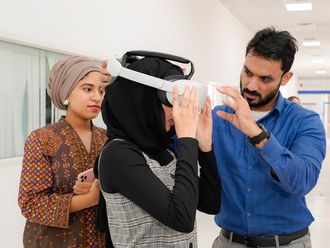Abu Dhabi: Graphic warnings on cigarette packs are mandated in the UAE, but senior health officials are considering making these warnings even more real to dissuade residents from tobacco use.
In fact, these warnings, which currently cover 50 per cent of each cigarette pack, could soon feature actual pictures of the damage caused by cigarettes to the human body, Dr Wedad Al Maidour, head of the National Tobacco Control Committee at the UAE Ministry of Health, told Gulf News today (March 18).
“We know that people in the region, especially teens, are careful about the way they look. So, perhaps pictures of the unattractiveness caused by smoking can be a deterrent,” Dr Wedad said.
These could include pictures of the blackened lungs and lips, or the wrinkled faces and yellow teeth, which come about from smoking.
“In addition, the ongoing worldwide discussion about plain packaging [without any brand logos, and brand names printed only in standardised font and size] for cigarette packs, which is already implemented in 11 countries, has been noted by top UAE health officials. We hope to study this further and even implement it within the next five years,” she added.
The official was speaking on the sidelines of the World Conference on Tobacco Or Health, a five-day forum in the capital focused on tobacco control and elimination. The high-level event is expected to see the attendance of more than 2,000 health-care professionals, policy-makers and experts from across the world.
While the UAE implemented Federal Law No 15 of 2009 on Tobacco Control, many of its by-laws have taken a while to come about. For example, the requirement for graphic warnings was implemented at the beginning of 2013.
Dr Wedad explained that moving into plain packaging would take cooperation and coordination between authorities across the Gulf Cooperation Council, and would necessitate the building of enough human resource capacity.
“Like all over the world, we, too, are struggling against big tobacco companies, and the World Trade Organisation, which argues the right to market products. But other countries have succeeded in pushing for plain packaging and I am hopeful,” she said.
About 21 per cent of the UAE adult population smokes tobacco in one form or another. According to the World Health Organisation statistics collected in 2009, this includes 19 per cent of men and 2 per cent of women.
“However, our national agenda aims to reduce these levels by 15 per cent by 2021. Moreover, we are working to finish a national census that includes information on the prevalence of smoking, and we hope to complete it by the end of 2015,” Dr Wedad said.
Other forms of tobacco
In the UAE, tobacco use through shisha (waterpipes) and midwakh (pipe tobacco) are also common. Officials have said in the past that these are harder to regulate, as they do not come in standardised, labelled packs and from established producers.
“But I have noticed that dokha (tobacco used in pipes) now comes in smaller packages and that there are labels on many of them, so this is a step in the right direction,” the official said.












